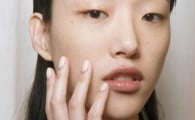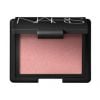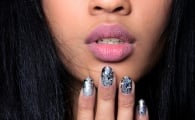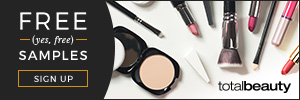Beauty Tips
8 Secrets Cosmetic Companies Don't Want You to KnowYou won't believe what these cosmetic chemists had to say about your beloved beauty products |
Keep Calm and Research On If you're having a heart attack right now because you just discovered methanal listed in your favorite nail polish (and unless it's a "3 Free," it probably is), take Alcide's advice: do your research. "Because there are thousands of skin care products, it is up to the consumer to do their homework reading labels," she says. (A bit obvious, but do you? Ever?) Scour the ingredient list and look up anything you don't recognize. You can look up products and ingredients on the Environmental Working Group's website, or on California's new Safe Cosmetics Program Product Database. More buyer-beware tips from Alcide:
-Consider it a red flag when you buy a product online that only lists "key ingredients." Alcide says this is one way cosmetic companies try to highlight "marketable" ingredients: things that sounds like they're natural or good for you (like avocado oil, orchid extract, and coconut milk), but only make up a tiny percentage of the product. Check out the rest of the ingredients (the FDA's labeling act requires every ingredient to be published in descending order on the bottle or bottle's packaging) to find what the primary ingredients are.
-Be wary of products with an ingredient list printed on the box, versus printed on the bottle. Since you throw out the packaging once you open the product, Alcide says this is another way some cosmetic companies try to gloss over less-than-ideal ingredients. When you decided you want to look up the ingredients, it's too late -- the packaging with the list on it is in last month's trash.
-Be smart about products you buy outside the U.S. Harmful ingredients that are banned in products sold in the U.S. might not be banned elsewhere. Example: Mercury is banned in the U.S., but not in China. Europe has 1,373 ingredients on their banned list. The U.S. list of banned ingredients clocks in at ... eight.
SEE NEXT PAGE: The Outside Doesn't Always Match the Inside
-Consider it a red flag when you buy a product online that only lists "key ingredients." Alcide says this is one way cosmetic companies try to highlight "marketable" ingredients: things that sounds like they're natural or good for you (like avocado oil, orchid extract, and coconut milk), but only make up a tiny percentage of the product. Check out the rest of the ingredients (the FDA's labeling act requires every ingredient to be published in descending order on the bottle or bottle's packaging) to find what the primary ingredients are.
-Be wary of products with an ingredient list printed on the box, versus printed on the bottle. Since you throw out the packaging once you open the product, Alcide says this is another way some cosmetic companies try to gloss over less-than-ideal ingredients. When you decided you want to look up the ingredients, it's too late -- the packaging with the list on it is in last month's trash.
-Be smart about products you buy outside the U.S. Harmful ingredients that are banned in products sold in the U.S. might not be banned elsewhere. Example: Mercury is banned in the U.S., but not in China. Europe has 1,373 ingredients on their banned list. The U.S. list of banned ingredients clocks in at ... eight.
SEE NEXT PAGE: The Outside Doesn't Always Match the Inside



























